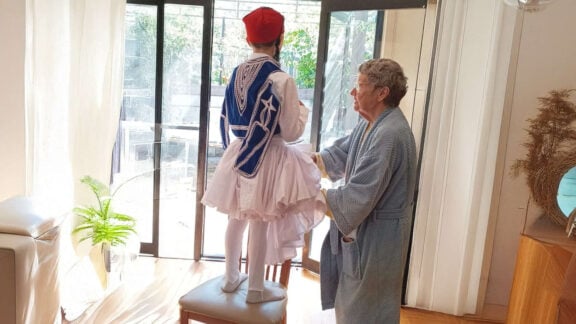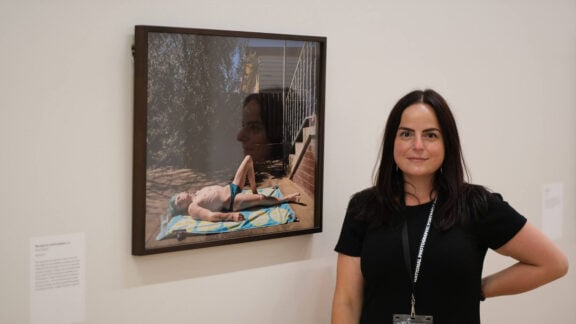Khouloud Hawatt, a mother of five was found dead inside a Sydney unit on Wednesday, her husband is now in police custody. Khouloud is the 98th Australian woman killed this year and the ninth since the start of the 16 Days of Activism to End Gendered Violence, according to The Red Heart Campaign, which documents the killings of Australian women and children.
The Federal Government committed $925 million in extra funding toward the “Leaving Violence” program earlier this year to address this crisis, yet the number of women dying at the hands of intimate partners has risen.
Domestic Violence educator and lawyer Cassandra Kalpaxis is seeing “domestic violence on a far bigger scheme than what it previously ever was.”
“I’m seeing it in a multitude of different ways. Ten years ago, they used to come and see me and it was obvious that they were the victim of domestic violence, whereas now I’m seeing women who have lived these horrible existences for 20 or 30 years. They are telling me that they’re the victims of sexual abuse, physical abuse and emotional abuse – every second client of mine is sitting in that category now.”
Violence is worse and the signs are not as apparent
Abuse often included coercive control – where perpetrators use tactics like, tracking or monitoring a partner’s phone, isolating them from friends, constant manipulation and the weaponizing comments, Kalpaxis said adds that technology has made it easier for abusers to find new ways to harm their victims.
Kalpaxis has seen many women, and men, (even if less often), trapped in violent relationships.
“Often, I meet them after a triggering event—an incident so severe that they are finally compelled to seek help. Yet, by this point, they are frequently at breaking point, having endured years and even decades of emotional, financial, or physical abuse.”
For many of her clients, Kalpaxis said it’s not fear for their own safety that prompts them to leave, but the safety of their children.
“Sadly many still don’t understand their full rights, or are too scared to seek what they’re entitled to, fearing they might upset the abuser. This hesitation often stems from years of long-term conditioning to prioritise the abuser’s needs over their own.”
A desire to see a change
Kalpaxis wanted to go beyond her day professional practice to help usher grater change.
“Every day I am faced with women who are trying to leave abusive relationships – and one of the harshest realities, is seeing how many women have come through my door who don’t realise they’re in these kinds of relationships.
“I’ve lost too many clients at the hands of an abuser.”
There are only two organisations in Sydney that run workshops for perpetrators of gender-based violence, and they have an 18-month waiting list. So, Kalpaxis launched Not One More Girl DV Education earlier this year which is aimed at teaching teenagers how to identify abuse in its insidious forms.

“DV is largely learned behaviour. We can actually stop it by teaching and educating people, particularly young children, about what a safe relationship is and looks like.” Kalpaxis said.
The first workshop began last month, when she travelled to Cairns.
“There were a lot of ‘A-ha’ moments where a lot of people didn’t realise what DV was and it was amazing seeing so many young men take it so positively.
“However there has been much resistance from schools towards the program – who are happy for certain topics to be spoken about, often aligned to the curriculum, but not other topics,” she said.
Kalpaxis believes that prevention must start early, inside and outside the classroom, especially for those who exhibit violent tendencies. The program is part of an effort to offer “early intervention and support before it’s too late”.
Technology has become a common tool for perpetrators of abuse
Kalpaxis has seen an increase in clients who come with stories of their partners tracking their phones, controlling their online presence, and even monitoring their bank accounts.
“This level of surveillance creates a terrifying sense of helplessness.”
She stressed, that there is a significant lack of training for those working within the system to identify and address the less visible forms of gender violence.
Overcoming Barriers to Support
Kalpaxis acknowledges the increased Commonwealth funding for DV support, but highlights the lack of education for victims on accessing these services.
“Many women don’t know these funds exist, or fear the consequences of using them. Some worry that by accepting a grant, it might lead to their children being taken away, or that the support doesn’t cover their situation Kalpaxis said.
She also points to the “complex application processes also deter victims from seeking help.”
Kalpaxis said a driver of gender-based violence is financial stress, the cost-of-living crisis and as important, a lack of understanding about what constitutes Domestic Violence (DV), and as a whole, gender-based violence.
“People are struggling” she said.
The expert adds culture, faith, and ideology as additional factors.
“Those with difficult upbringings or exposure to learned behaviours are particularly vulnerable, and situational violence is worsening.
Leaving an abusive relationship is expensive. “Many feel trapped and that takes a toll on their mental health too.”








